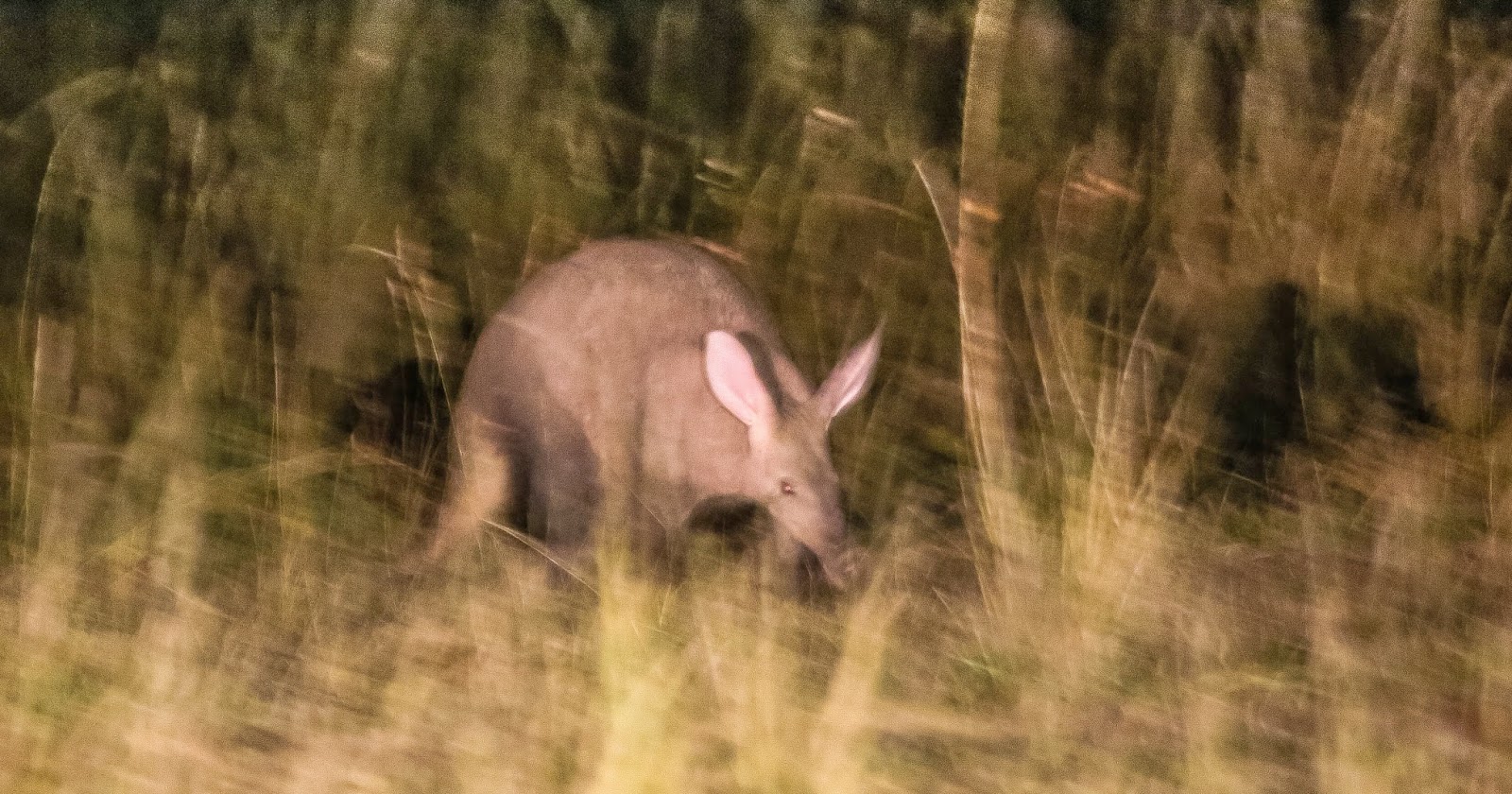During a night safari in Masai Mara we encountered an aardvark. Our guide told us that he had been doing night safaris for eight years and this was only the third aardvark he'd seen. It is said that if you see an aardvark, you will have a long life. My pictures are all from Esmee Tooke. Our vehicles had large spotlights which provided the light for the pictures.
 |
| An aardvark at the base of a termite mound with some antelope behind it. |
 |
| Large ears, like a jackrabbit, and long pointed pig-like snout. |
The aardvark is found throughout sub-Saharan Africa but is not common anywhere. However, because it has such a wide range, it is a species of least concern. The name comes from Afrikaans (erdvark) and means "earth pig." It is the only species in its order and its closest living relative is the elephant shrew, but it is also related to the elephant and the hyrax. There are 17 subspecies and I have made no attempt to try and figure out what subspecies we were looking at.
 |
| Side view |
They eat termites and ants, as many as 50,000 in one night have been recorded. They have a long sticky tongue, about 12 inches long, which sweeps up the insects and a very tough skin which protects them from bites and stings from the insects. Their large ears give them great hearing and they use both smell and hearing to locate food.
Their extensive burrows provide shelter for other animals and help them survive fires.
 |
| This is an aardvark burrow we saw on our nature walk on Mt. Kenya. |


This was one of the many highlights of the trip and made the pricey night drive worth the expense. It is probably an experience we will never have again, even if we get back to Africa some day.
ReplyDelete"Aardvark, aawesome aardvark,
ReplyDeleteyou're aamazing aand aastounding.
You're aattractive aand aapealing,
with aamenity aabounding....."